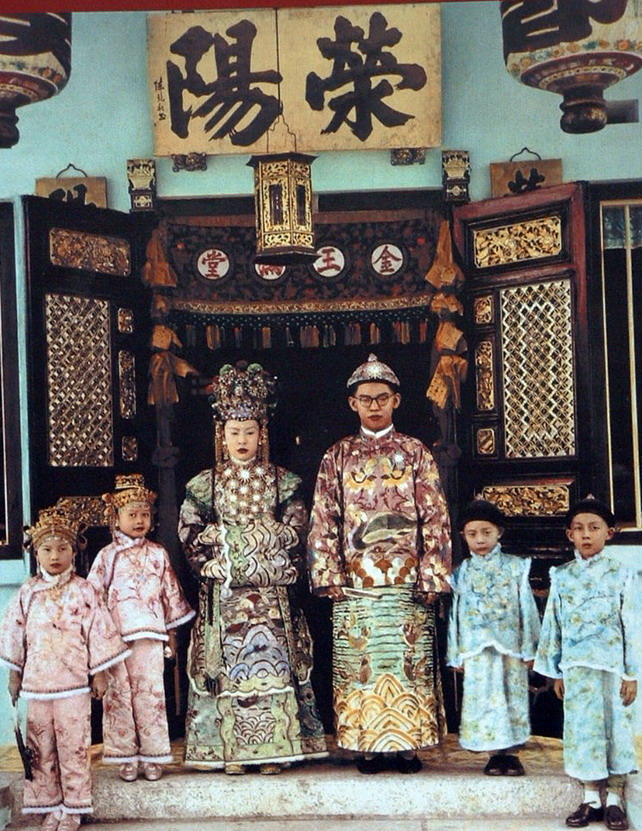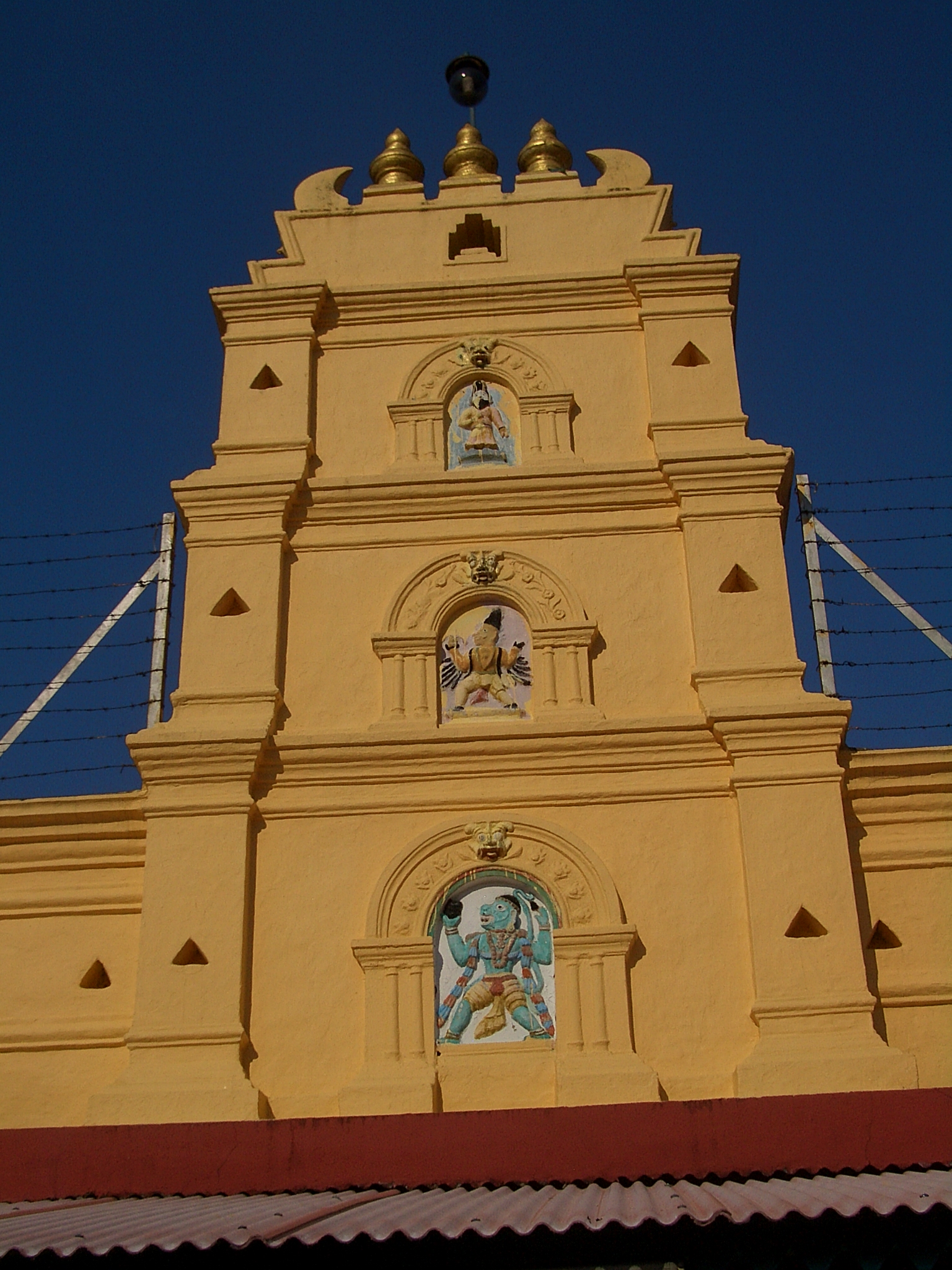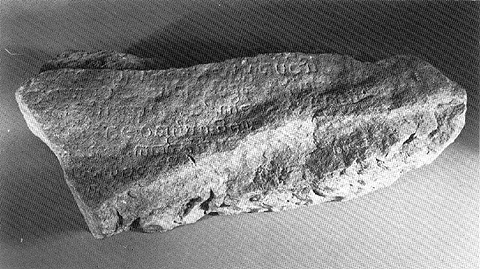|
Chitty
The Chitty, also known as the Chetty or Chetti Melaka, are a distinctive group of Tamil people found mainly and originally in Melaka, Malaysia, and in Singapore where they migrated to in the 18th and 19th centuries from Melaka, who are also known as the "Indian Peranakans" and have adopted Malay (mostly) and Chinese cultural practices whilst also retaining their Hindu faith and heritage. In the 21st century, their population stands at 2,000. The Chitty/Chetti community or Chettiar community, is from South India and are devout Hindus. Language Like the Peranakans, the Chitty speak a Malay patois, which is mixed with many Tamil loan words. Many of the Chitty are unable to communicate in Tamil fluently. History Historical records stated that the Tamil traders from Panai in Tamil Nadu settled down in Melaka during the sovereignty of the Sultanate of Malacca. Like the Peranakans, they later settled down and freely intermingled with the local Malays and Chinese of Malay and Tamil ... [...More Info...] [...Related Items...] OR: [Wikipedia] [Google] [Baidu] |
Chitty Museum
The Chitty Museum ( ms, Muzium Chetti) is a museum about the minority Chitty community, which is located within the Chitty Village area in Malacca City, Malacca, Malaysia. It is housed in a traditional Chitty house which has been renovated by PERZIM. The Chitty had previously desired to run a museum but were stymied by the 1997 Asian financial crisis. Visits in June 2000 by Tan Sri Datuk Seri Haji Mohd Ali Rustam, Chief Minister of Malacca at the time, secured the necessary funding to establish the museum. The construction of the museum was funded by Malacca State Government and completed in September 2002. It was constructed by Malacca Museum Corporation (PERZIM). The museum was opened on 5 August 2003 to introduce the culture of Chitty community. The museum exhibits all of the information regarding Chitty community. It houses a collection of artifacts and archives of the daily life of Chitty people, ranging from history, temple, attire, trustee, food, culture, religious affa ... [...More Info...] [...Related Items...] OR: [Wikipedia] [Google] [Baidu] |
Peranakan
The Peranakans () are an ethnic group defined by their genealogical descent from the first waves of Southern Chinese settlers to maritime Southeast Asia, known as Nanyang (), namely the British Colonial ruled ports in the Malay Peninsula, the Indonesian Archipelago as well as Singapore. Peranakan culture, especially in the dominant Peranakan centres of Malacca, Singapore, Penang and Medan, is characterized by its unique hybridization of ancient Chinese culture with the local cultures of the Nusantara region, the result of a centuries-long history of transculturation and interracial marriage. Immigrants from the southern provinces of China arrived in significant numbers in the region between the 14th and 17th centuries, taking abode in the Malay Peninsula (where their descendants in Malacca, Singapore and Penang are referred to as Baba–Nyonya); the Indonesian Archipelago (where their descendants are referred to as Kiau–Seng); and Southern Thailand, primarily in Phuket, ... [...More Info...] [...Related Items...] OR: [Wikipedia] [Google] [Baidu] |
Peranakans
The Peranakans () are an ethnic group defined by their genealogical descent from the first waves of Southern Chinese settlers to maritime Southeast Asia, known as Nanyang (), namely the British Colonial ruled ports in the Malay Peninsula, the Indonesian Archipelago as well as Singapore. Peranakan culture, especially in the dominant Peranakan centres of Malacca, Singapore, Penang and Medan, is characterized by its unique hybridization of ancient Chinese culture with the local cultures of the Nusantara region, the result of a centuries-long history of transculturation and interracial marriage. Immigrants from the southern provinces of China arrived in significant numbers in the region between the 14th and 17th centuries, taking abode in the Malay Peninsula (where their descendants in Malacca, Singapore and Penang are referred to as Baba–Nyonya); the Indonesian Archipelago (where their descendants are referred to as Kiau–Seng); and Southern Thailand, primarily in Phuke ... [...More Info...] [...Related Items...] OR: [Wikipedia] [Google] [Baidu] |
Sri Poyatha Moorthi Temple
Sri Poyatha Moorthi Temple is the oldest existing/intact Hindu temple in Malaysia and one of the oldest functioning Hindu temples in Maritime Southeast Asia. Located in the state of Malacca, the temple is one of the few existing Chitty temples in Malaysia. The temple is situated on Jalan Tukang Emas, also known as "Harmony Street" because of its proximity to the Kampung Kling Mosque and Cheng Hoon Teng Temple. The temple was built by Thavinayagar Chitty, the leader of the Chitty people, in 1781 after the Dutch colonial government of Malacca gave him a plot of land. The temple is dedicated to Vinayagar or Ganesha, the elephant deity. In the back room is a sculpture of the deity with the head of an elephant and the body of a man with four hands. There is another altar dedicated to Lord Muruga, the younger brother of Lord Vinayagar. History The Dutch colonial government in Malacca granted the Chitty community a piece of land, in the heart of Malacca City in the 1780s. The lan ... [...More Info...] [...Related Items...] OR: [Wikipedia] [Google] [Baidu] |
Melaka
Malacca ( ms, Melaka) is a state in Malaysia located in the southern region of the Malay Peninsula, next to the Strait of Malacca. Its capital is Malacca City, dubbed the Historic City, which has been listed as a UNESCO World Heritage Site since 7 July 2008. The state is bordered by Negeri Sembilan to the north and west and Johor to the south. The exclave of Tanjung Tuan also borders Negeri Sembilan to the north. Its capital Malacca City is southeast of Malaysia's capital city Kuala Lumpur, northwest of Johor's largest city Johor Bahru and northwest of Johor's second largest city, Batu Pahat. Although it was the location of one of the earliest Malay sultanates, namely the Malacca Sultanate, the local monarchy was abolished when the Portuguese conquered it in 1511. The head of state is the '' Yang di-Pertua Negeri'' or Governor, rather than a Sultan. Malacca is noted for its unique history and it is one of the major tourist destinations in Malaysia. With a highly strateg ... [...More Info...] [...Related Items...] OR: [Wikipedia] [Google] [Baidu] |
Tamil Malaysians
Tamil Malaysians, also known as Malaysian Tamilar, are people of full or partial Tamil descent who were born in or immigrated to Malaysia from Tamil Nadu, India and the Tamil regions of north-east Sri Lanka. The majority of 1.8–2 million people 80% of the Malaysian Indian populations in Malaysia were from Indian Tamil ethnic groups from Tamil Nadu and Sri Lanka. The bulk of Tamil Malaysian migration began during the British Raj, when Britain facilitated the migration of Indian workers to work in plantations. There are, however, some established Tamil communities from before British colonialism.Culture and economy:Tamils in the plantation sector 1998-99 (April 2000) Precolonial period Relations between Tamils and, what is now, Malaysia have existed for ...[...More Info...] [...Related Items...] OR: [Wikipedia] [Google] [Baidu] |
Malay Chetty Creole Language
The Malay Chetty creole language (also known as Malaccan Creole Malay, Malacca Malay Creole and Chitties/Chetties Malay) is a Malay-based creole spoken by the Chetties, a distinctive group of Tamil people found mainly in Malacca in Malaysia and Singapore, who are also known as the "Indian Peranakans" and have adopted Chinese and Malay cultural practices whilst also retaining their Hindu heritage. Spoken since the 16th century by descendants of Tamil merchants of the Malacca Straits, Malay Chetty creole may be historically related to Sri Lanka Creole Malay. The current language status is moribund, due to inter-marriage and out-migration. There has been a language shift towards Malay instead. Malay Chetty creole is a mix of Malay, Tamil and English, although the latter's presence in the creole is not as prominent compared to the first two languages. Because of the strong influence of Malay on this creole, Malay Chetty creole is not very different from other Malay dialects, espec ... [...More Info...] [...Related Items...] OR: [Wikipedia] [Google] [Baidu] |
Indian Singaporeans
Indian Singaporeans (Tamil: ') are Singaporeans of Indian or South Asian ancestry, who constitute 9.0% of the country's citizens, making them the third largest ancestry and ethnic group in Singapore. While contact with ancient India left a deep impact on Singapore's indigenous Malay culture, the mass settlement of Indians on the island only began with the founding of modern Singapore by the British in 1819. Initially, the Indian population was transient, mainly comprising young men who came as workers, soldiers and convicts. By the mid-20th century, a settled community had emerged, with a more balanced gender ratio and a better spread of age groups. Indian Singaporeans are linguistically and religiously diverse, with ethnic Tamils and Hindus forming majorities. The Indo-Singaporean culture has endured and evolved over almost 200 years. By the 1990s, it had grown somewhat distinct from contemporary South Asian cultures, even as Indian elements became diffused within a bro ... [...More Info...] [...Related Items...] OR: [Wikipedia] [Google] [Baidu] |
Malaysia
Malaysia ( ; ) is a country in Southeast Asia. The federal constitutional monarchy consists of thirteen states and three federal territories, separated by the South China Sea into two regions: Peninsular Malaysia and Borneo's East Malaysia. Peninsular Malaysia shares a land and maritime border with Thailand and maritime borders with Singapore, Vietnam, and Indonesia. East Malaysia shares land and maritime borders with Brunei and Indonesia, and a maritime border with the Philippines and Vietnam. Kuala Lumpur is the national capital, the country's largest city, and the seat of the legislative branch of the federal government. The nearby planned capital of Putrajaya is the administrative capital, which represents the seat of both the executive branch (the Cabinet, federal ministries, and agencies) and the judicial branch of the federal government. With a population of over 32 million, Malaysia is the world's 45th-most populous country. The southernmost poi ... [...More Info...] [...Related Items...] OR: [Wikipedia] [Google] [Baidu] |
Chettiar
Chettiar (also spelt as Chetti and Chetty)is a title used by many traders, weaving, agricultural and land-owning castes in South India, especially in the states of Tamil Nadu, Kerala and Karnataka. They are a subgroup of the Tamil community who originated from Chettinad in Tamil Nadu, India. Traditionally, the Chettiars were involved in the trade of precious stones, but later became private bankers and moneylenders. Etymology Chettiar/Chetty is derived from the Sanskrit word (Devanagari: श्रेष्ठ) or (Devanagari: श्रेष्ठीन्) meaning superior, Prakritised as (Devanagari: सेठी), and then (Devanagari: शेट) or (Devanagari: शेटी) in modern Indo-Aryan dialects. See also * Vallanattu Chettiar * Twenty four Manai Telugu Chettiars * Devanga Chettiar * Pattanavar * Chitty * Kandangi sari * Pattusali Pattusali (also spelt as Pattu Sale, Pattushali, Pata Sali & Patha Sali) is a Hindu community predominantly resid ... [...More Info...] [...Related Items...] OR: [Wikipedia] [Google] [Baidu] |
Han Chinese
The Han Chinese () or Han people (), are an East Asian ethnic group native to China. They constitute the world's largest ethnic group, making up about 18% of the global population and consisting of various subgroups speaking distinctive varieties of the Chinese language. The estimated 1.4 billion Han Chinese people, worldwide, are primarily concentrated in the People's Republic of China (including Mainland China, Hong Kong and Macau) where they make up about 92% of the total population. In the Republic of China (Taiwan), they make up about 97% of the population. People of Han Chinese descent also make up around 75% of the total population of Singapore. Originating from Northern China, the Han Chinese trace their cultural ancestry to the Huaxia, the confederation of agricultural tribes living along the Yellow River. This collective Neolithic confederation included agricultural tribes Hua and Xia, hence the name. They settled along the Central Plains around the middle an ... [...More Info...] [...Related Items...] OR: [Wikipedia] [Google] [Baidu] |
Ponggal
Pongal (, ), also referred to as Tai Pongal (), is a multi-day Hindu harvest festival celebrated by Tamils in India and Sri Lanka. Encyclopaedia Britannica (2011), Quote: "Pongal, three-day Hindu festival held throughout South India. It is celebrated on the winter solstice, when, according to the traditional Tamil system of reckoning, the Sun, having reached its southernmost point, turns to the north again and reenters the sign of makara (Capricorn), usually on January 14." It is observed at the start of the month ''Tai'' according to Tamil calendar, Tamil solar calendar, and this is typically about January 1 ... [...More Info...] [...Related Items...] OR: [Wikipedia] [Google] [Baidu] |

.png)




